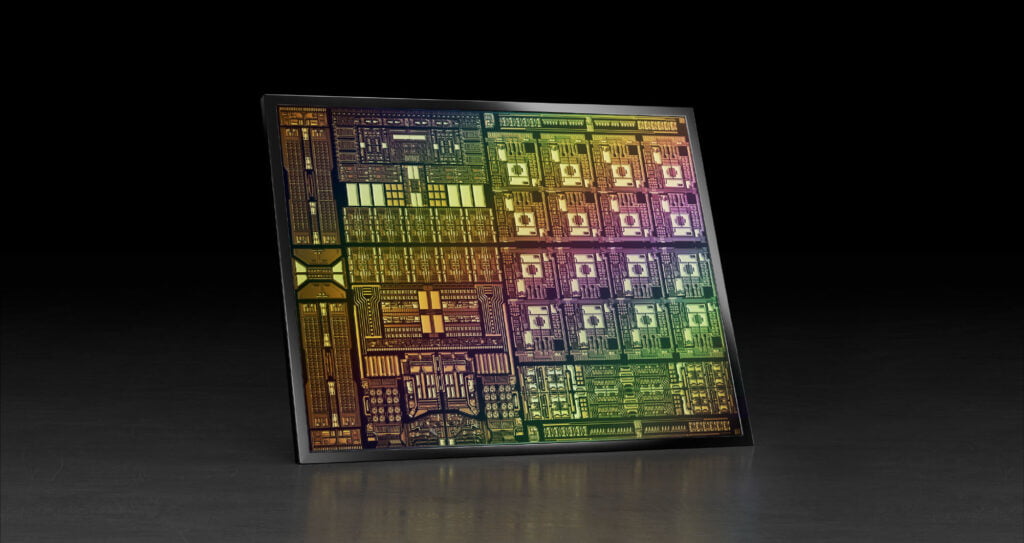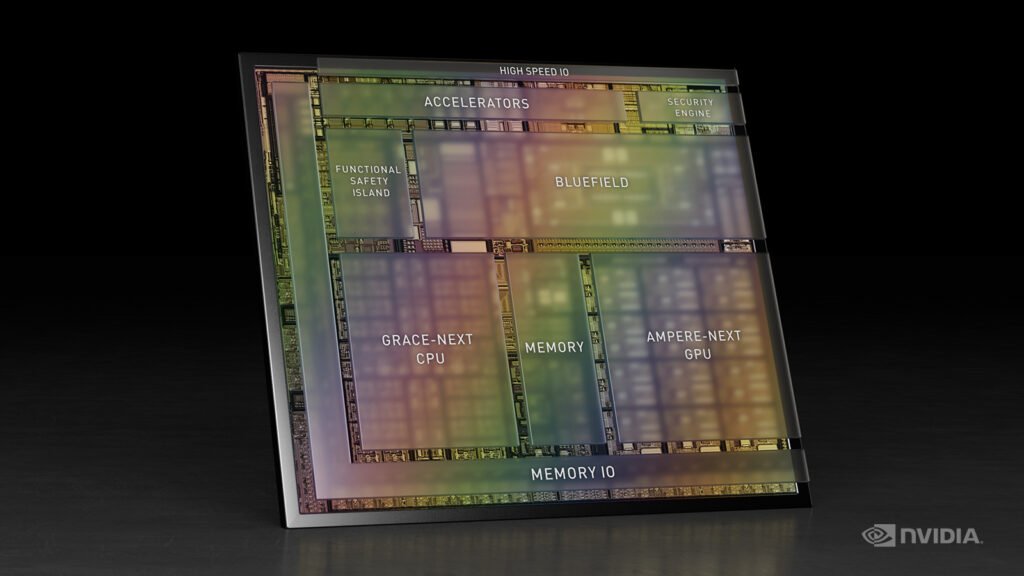US semiconductor giant Nvidia unveiled a series of new capabilities and processors this week, including a next-generation DPU (data processing unit) developed in Israel with the Nvidia Networking division, made up of teams from Mellanox Technologies.
Nvidia acquired Mellanox, a leading supplier of communications infrastructure for data servers and storage systems, for $7 billion last year and now employs 2,400 people in Israel across seven development centers in Yokneam, Tel Aviv, Ra’anana, Jerusalem, Beersheba, Kiryat Gat, and Tel Hai. The company’s development operations in Israel are the largest outside the US and it has plans to expand and hire at least 600 more engineers.
SEE ALSO: Nvidia Announces Plans To Expand In Israel, Recruit 600 Engineers
On Monday, Nvidia held its annual GTU Technology Conference 2021 where it revealed the Israeli-developed BlueField-3 DPU, a next-generation data processing unit designed for cloud-native environments that it says can deliver powerful software-defined networking, storage and cybersecurity acceleration capabilities at data center-scale – among a line of other significant products.
As a “data center infrastructure-on-chip,” one BlueField-3 DPU delivers the equivalent data center services of up to 300 CPU (central processing unit) cores, freeing up valuable CPU cycles to run business-critical applications, Nvidia explained in a statement. It features ten times the accelerated compute power of the previous generation and is also the first DPU to support fifth-generation PCIe (peripheral component interconnect express) and offer time-synchronized data center acceleration.

“Modern hyperscale clouds are driving a fundamental new architecture for data centers,” said Nvidia founder and CEO Jensen Huang. “A new type of processor, designed to process data center infrastructure software, is needed to offload and accelerate the tremendous compute load of virtualization, networking, storage, security and other cloud-native AI services. The time for BlueField DPU has come.”
The BlueField-3 DPU will be integrated into Nvidia’s DRIVE Atlan, a next-generation AI-enabled processor designed to deliver a broad range of networking, storage and security services to support complex compute and AI workloads found in autonomous vehicles. The DRIVE Atlan is the newest addition to Nvidia’s centralized compute roadmap for autonomous vehicles, the company said, and is designed to handle the large number of AI applications that run simultaneously in autonomous machines.

The Bluefield will be ready for sampling in 2022, according to the announcement, and is one of three core chips offered by Nvidia – DPU, CPU and GPU, which Nvidia invented in 1999, effectively redefining modern computer graphics and sparking the growth of the PC gaming market.
As its rivalry with Intel has accelerated, Nvidia has in recent years set its sights on artificial intelligence computing with a focus on gaming, autonomous vehicles and robotics, data centers, and professional visualization. Last year, Nvidia unveiled its A100 AI chip which Huang called the “ultimate instrument for advancing AI.”
Sign up for our free weekly newsletter
SubscribeTo that end, on Monday, Nvidia unveiled the Nvidia Grace CPU, an Arm-based processor the company says will deliver ten times the performance of today’s fastest servers on the most complex AI and high-performance computing (HPC) workloads.
The Grace CPU is designed to “address the computing requirements for the world’s most advanced applications — including natural language processing, recommender systems and AI supercomputing — that analyze enormous datasets requiring both ultra-fast compute performance and massive memory,” Nvidia said.

“Leading-edge AI and data science are pushing today’s computer architecture beyond its limits – processing unthinkable amounts of data,” said Huang. “Using Arm’s IP licensing model, Nvidia has built Grace, a CPU designed for giant-scale AI and HPC. Coupled with the GPU and DPU, Grace gives us the third foundational technology for computing, and the ability to rearchitect the data center to advance AI. Nvidia is now a three-chip company.”
The Swiss National Supercomputing Centre (CSCS) and the US Department of Energy’s Los Alamos National Laboratory were the first to announce plans to build Grace-powered supercomputers in support of national scientific research efforts.
SEE ALSO: Nvidia CEO: Every Big Company Wants To Be In Israel Today
Nvidia also unveiled a range of eight new Ampere architecture GPUs for next-generation laptops, desktops and servers, the RTX™ GPUs, as well as the RTX Virtual Workstation (vWS) and Virtual PC (vPC) software, which combined with Nvidia’s A10 and A16 GPUs deliver “more power, memory and speed to boost any workflow, from graphics and AI to VDI (virtual desktop infrastructure).
The company also announced a series of collaborations, including with the BMW Group, surrounding the Nvidia Omniverse Enterprise, which it described as “the world’s first technology platform that enables global 3D design teams working across multiple software suites to collaborate in real time in a shared virtual space.”
Related posts

Editors’ & Readers’ Choice: 10 Favorite NoCamels Articles

Forward Facing: What Does The Future Hold For Israeli High-Tech?

Impact Innovation: Israeli Startups That Could Shape Our Future



Facebook comments